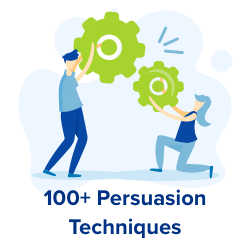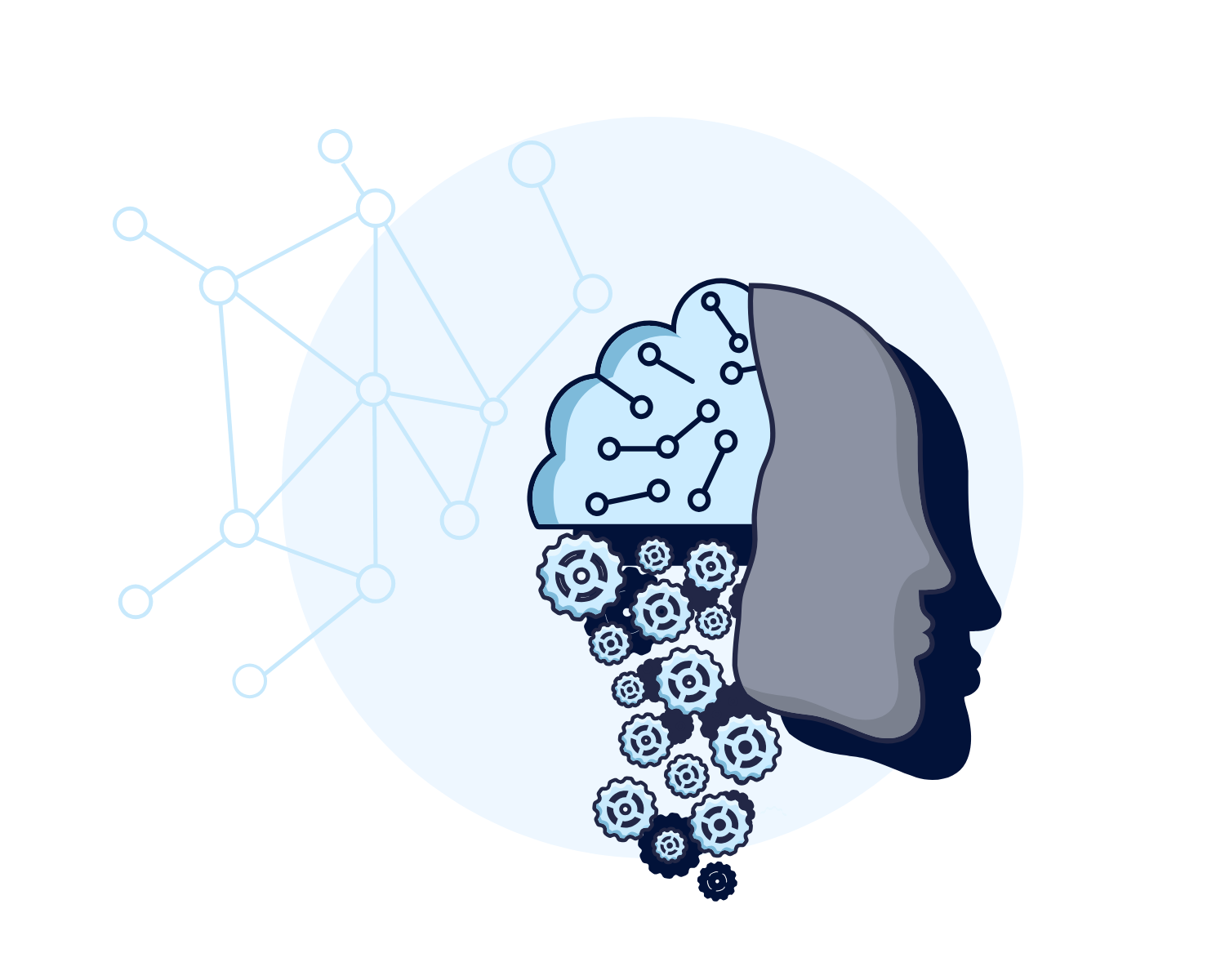72 Psychological Triggers
to Convert Visitors into Customers in 2025
What is a Psychological Trigger? How your visitors and website’s conversion rate are affected by psychological triggers? This list of 72 cognitive biases (psychological triggers) introduces the most important forms of unconscious bias that affect your business and conversions. By understanding these mental triggers, you can convert more of your visitors into customers.
What is a Psychological Trigger?
Psychological triggers (or cognitive biases) are mental habits that explain our tendency to think in a particular way. These habits (or “heuristics”) are not rational; instead, they help us to make quick decisions without thinking too much. On a professional level, understanding cognitive biases will help you to understand your customers better. This is because consumer behaviour is often due to cognitive biases.
The better you know these effects, the more persuasive you can be when you communicate with potential customers. Knowing how your customers think will help you to reduce your bounce rate and increase your conversions.
Here are 72 Psychological Triggers to Convert Visitors into Customers
1
Von Restorff Effect
The Von Restorff Effect is named after the psychiatrist who first studied it (Hedwig von Restorff), whereby individuals take note of and remember unusual or unique items more rapidly than other more uniform items.
Contrast Principle
When you experience two similar things simultaneously or in succession, your perception of the second is influenced by the first.
Paradox of Choice
The Paradox of Choice explains the fact that having too much choice can in fact lead individuals to reach less effective and satisfactory decisions that they would have if presented with less choice.
Cheerleader Effect
The Cheerleader Effect is the way in which individual items become more attractive to us when presented in a group.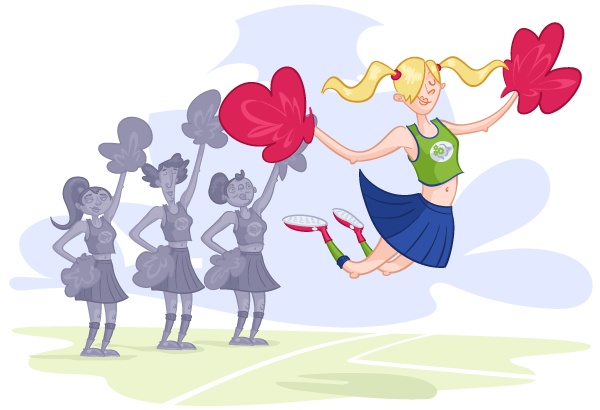
Loss Aversion
Loss Aversion explains our tendency to strongly prefer avoiding losses over acquiring gains.
Scarcity Effect
The Scarcity effect is the cognitive bias that makes people place a higher value on an object that is scarce and a lower value on one that is available in abundance.
Immediacy Effect
The Immediacy Effect is a cognitive bias that leads people, when presented with two similar possible things, to have a greater desire for the one that will arrive or take place soonest. This even leads us to prefer an immediate reward over a higher-value, delayed reward.
Pain of Paying
The Pain of Paying explains how the act of paying reduces the pleasure of our purchase and that this “pain of paying” is affected by both the timing between payment and consumption and by the mode of payment.
Reciprocity Principle
The reciprocity principle is based on the “give and take” idea: if you provide me with something of value, I will be more likely to provide you with something of value in return.
Fear of Missing Out (FOMO)
Fear of Missing Out (or, FOMO) is the apprehension that others might be doing something interesting from which one is absent or the fear of having made the wrong decision and therefore missed out on a different, perhaps better, alternative.
Decoy Effect
The Decoy Effect is the way in which adding an additional “decoy” item to the table when a customer is making a purchase decision can ultimately influence which decision they make as it is common for us to make use of comparisons to decide the value of something and whether we want to buy it.
Hobson’s +1 Choice Effect
The Hobson’s +1 Choice Effect explains the way that giving people the option to choose between two things actually makes them more likely to choose the option that you want (purchasing your product) than if you only give them the option to only do that or nothing at all.
Serial Position Effect
The Serial Position Effect is the way in which people tend to recall the first and last items in a series best, and the middle items worst.
Self-efficacy Theory
Self-efficacy theory explains the way in which a person’s belief in their own competence to complete a task affects the way they approach and perceive this task.
Cognitive Ease
Cognitive Ease describes the way mental effort affects how positively we feel about something. The ease with which our brain processes information affects our overall impression of what we are thinking about.
Ambiguity Effect
The Ambiguity Effect describes people’s preference for known risks over unknown risks.
Aesthetic-Usability Effect
Aesthetic designs are perceived as easier to use than less-aesthetic designs, and are more likely to be purchased regardless of functionality.
Anchoring Effect
The Anchoring Effect describes the way in which people utilise the first piece of information they receive as a point of reference for making judgements about subsequent pieces of information.
Social Proof
Social Proof is a type of conformity. When a person is in a situation where they are unsure of the correct way to behave, they will often look to others for cues concerning the correct behaviour. Because of this, online businesses often use Social Proof in their marketing.
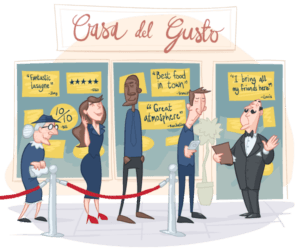
20
Social Cognition
Social Cognition explains the way that most people associate positively with themselves and therefore tend to prefer things that are connected to them.
Weber’s Law
Weber’s Law quantifies the perception of change in a given stimulus: it states that the just-noticeable difference of a change is directly proportional to the status of the original stimulus.
Cognitive Dissonance
We prefer it when all our attitudes and beliefs are held in harmony and, when they aren’t, this produces an uncomfortable and detrimental Cognitive Dissonance.
Zeigarnik Effect
The Zeigarnik effect shows that incomplete tasks stick in your mind more than ones you have completed.
Single-option Aversion
When shoppers are given a take-it-or-leave-it option, it makes them more interested in searching for comparisons.
Processing Efficacy
We tend to prefer things that are simple for us to understand or use.
Cognitive Friction
Learning happens best under conditions that are aligned with human cognitive architecture.
Need for Certainty/Uncertainty
The paradox between the fact that our brain likes to know what is going on and to feel certain, and the fact that uncertainty is also a human need and can lead to action and creativity.
Choice-supportive bias
The fact that when we recall a past decision, we distort our memories so that the choices we made appear to be the best possible.
Foot-in-the-door Technique (FITD)
The Foot-in-the-door (FITD) is a technique whereby you first work on getting a small yes to then hopefully get an even bigger one.
Mere-exposure Effect
The Mere-exposure Effect is the way in which a positive reaction can be induced simply from familiarity with something.
Framing Effect
The Framing Effect is a cognitive bias that explains how people will react differently to messages and choices depending on how it is presented to them.
Intention and Self-regulation
Setting a very precise intention regarding how you are going to reach a certain goal can double or even triple your chances of reaching it.
Curse of Knowledge
The Curse of Knowledge is a cognitive bias that prevents those who are better informed from understanding something from the point of view of a lesser-informed party.
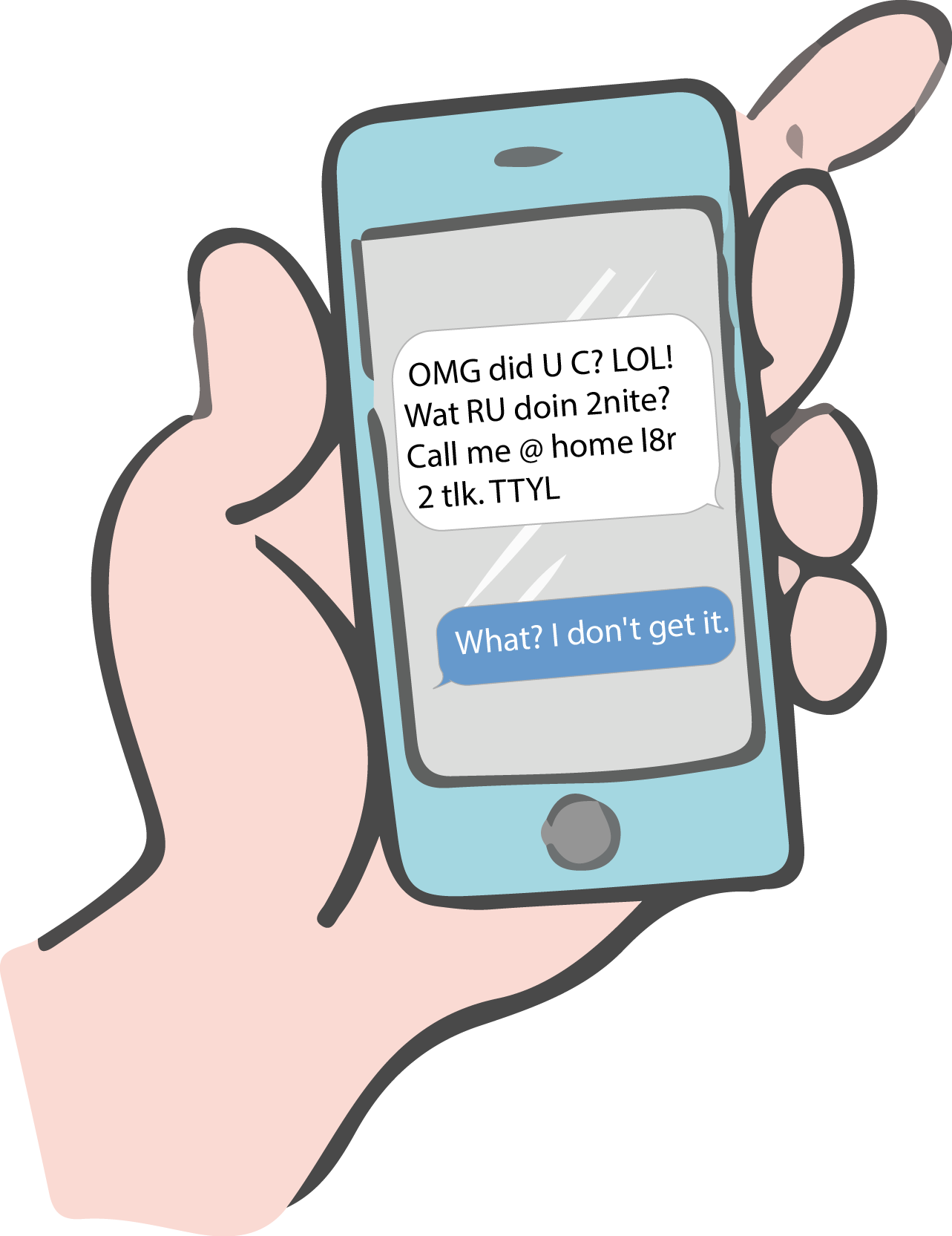
Autonomy Bias
The Autonomy bias can de defined like this: We prefer situations that we have control over.
Focusing Effect
The Focusing Effect (or Focusing Illusion as it is otherwise known) is the way in which the human mind places too much emphasis on certain limited factors when making decisions.
Endowment Effect
The Endowment Effect is the way in which we tend to give greater value to things that we already possess.
Having vs Using effect
The Having vs Using Effect explains our tendency to prefer and be willing to pay more for products or services that offer more functions, even if we’re unlikely to actually make use of them.
Default Effect
The Default Effect explains our tendency to choose a “default option” if one is on offer.
Gaze Cueing
Gaze Cueing explains how we are automatically attracted to others’ gazes and lines of sight, whether that be looking directly in to someone’s eyes during a face-to-face conversation or the way in which we tend to follow the gaze of others to see what they are looking at.
Visual Cueing
Our brains form the majority of the images we “see” and like to be given direction about what to focus on so using visual cues, like arrows, help to draw attention towards certain elements.
Centre-Stage Effect
The Centre-Stage Effect is the way in which, when faced with a range of products presented side by side, we tend to be drawn towards the one situated in the middle.
Authority Principle
The Authority Principle describes the way in which we tend to obey authority figures even when what they’re asking of us is questionable.
Salience Effect
The Salience Effect is the way in which we are more drawn to those things that are the most relevant for us at any particular moment and we will not only notice but retain information about these salient elements more easily.
Commitment and Consistency
Once we have publicly committed to something or someone, then we are more likely to carry through and deliver on that commitment in order to be consistent.
Representativeness Heuristic
People have a tendency to judge the probability of an event through relying on information from the occurrence of similar events – or, more generally, to make biased predictions and generalisations by counting on similar models and happenings.
Magnitude Encoding Process
The way in which we perceive pricing can be affected by the way in which it is presented to us and so making use of size, placement or colour, for example, can influence how small the price appears to be.
Picture Superiority Effect
Picture Superiority Effect is the way that we tend to remember images for much longer than words, so using images alongside text or even using images alone is much more effective than just using text.
Metaphor Effect
The Metaphor Effect is the way in which we tend to understand and remember more easily metaphorical language as it activates our imagination.
Psychological Reactance
Psychological Reactance is something that occurs when we feel like our choices or behavioural freedoms are being restricted or taken away.
Visual Depiction Effect
Visual depiction effect means that people are more inclined to buy a product when it is shown in a way which helps them to visualise themselves using it.
Physical Attractiveness
Using physically attractive models in adverts can, dependent on context, help increase sales.
Halo Effect
The Halo Effect is the way in which we tend to see someone or something in a positive light due to just one positive trait that we are aware of, even if it’s not related at all.
Time versus Money Effect
When selling a product, making reference to the time a customer will spend with that product rather than to any money that will be spent (or even saved) in order to have it is a much more effective way of inciting a positive reaction.
Recency Effect
The Recency Effect describes how we are more likely to retain and attribute importance to the most recent piece of information we’ve heard or seen.
Attentional Bias
Attentional bias is the way in which human beings notice and pay much more attention to things that touch us emotionally.
Information Bias
Information bias is the tendency to seek out information, thinking that it will lead us to make a better decision, even when that information is of no real help.
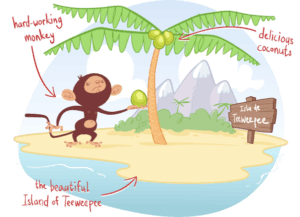
57
Sunk Cost Effect
The Sunk Cost Effect proves that people can be influenced in to making irrational decisions based on a perceived loss of money, time or effort already invested in something.
The Split-attention Effect
The Split-attention Effect is the way in which human cognitive processing isn’t as receptive to information that is presented separately as when it is combined into one easily digestible format.
Ben Franklin Effect
Doing someone a favour leads us to feel more favourably towards that person and to be more inclined to do them a second or third, etc. The opposite effect also exists, whereby we project dislike on to people we haven’t treated well.
Motivating-Uncertainty Effect
Introducing a degree of uncertainty to a rewards-based system can increase people’s investment in completing a task successfully.
Perceived Value Pricing
Perceived Value Pricing explains how our perceptions of a price and its value can be altered depending on how it is presented to us.
Reference Pricing
Reference Pricing refers to the fact that we decide what is a justifiable price to pay for a product or service by comparing it to other reference prices (such as competitors’ pricing or previous, pre-sale pricing etc.).
Partitioned Pricing
Partitioned Pricing is the way in which splitting the total price of something in to separate parts can ease the purchasing process by making the human psyche believe that the overall cost is less.
Social Comparison Theory
Social Comparison Theory centers on the belief that individuals prefer to evaluate themselves through comparison to others, unhappy with absolute outcomes.
Risk Compensation
Risk Compensation explains a tendency for humans to take greater risks when perceived safety increases.
Zero-Risk Bias
Zero-risk bias explains our tendency to prefer options that have absolutely no risk attached to them, even if they don’t offer as significant rewards and other options may have been more advantageous in the long run.
In-group Bias
In-group Bias is a pattern whereby humans tend to favour members of their own “in” group over people from outside of that group.
Choice Closure
Choice Closure is a concept that describes how being able to complete a physical act of closure after making a choice helps the decision-maker to be much more satisfied with their choice.
Motivation
A person’s motivation can be intrinsic (based on an internal factor or personal interest) or extrinsic (based on an external factor) and these two types of motivation will have a varying degree of influence depending on the context.
Attention Ratio
Attention Ratio is based on the fact that people are more likely to follow through on an action if their focus is concentrated and their attention is not split between lots of different elements.
Psychology of Consumption
The Psychology of Consumption explores the fact that when someone actually makes regular use of the product or service they’ve bought then they’re much more likely to make a repeat purchase.
Reciprocity Decay
The Reciprocity Decay is based on new research suggesting that our desire to give back shrinks rapidly with time. The Reciprocity principle is based on the “give and take” effect and is not related to time. However, a new study suggests the opposite: that reciprocity has a a very narrow timeframe and will quickly vanish.
Start using Psychological Triggers in your Marketing Strategy
Knowing what are psychological triggers (or cognitive biases) and how they affect your customers will help you to effectively optimise your website, improving user experience and therefore increasing your conversion rate – and revenue!
You can start building hypothesis based on specific psychological triggers. But make sure to test each hypothesis with an A/B Testing tool so you can verify that they are statistically significant and more efficient.
If you don’t feel confortable enough with all these cognitive biases, you can also hire our CRO Agency Services.

